Armadillos are one of the only mammals that has its entire body covered with a hard outer shell. They mainly live in the grasslands, rainforests and semi arid areas. These curious little creatures have a few mysteries surrounding them, therefore, we have created this list of 26 interesting and weird facts about armadillos to help you understand them better.
1. Armadillos vary vastly in color. Some are pinkish and red while others can be dark brown, black, grey or even yellowish.
2. They vary in size as well. Some can be 5 inches in length while others are up to 59 inches. Their weight also varies from 3 pounds up to 120 pounds.
3. Their head, back, legs and tail are covered with hard bony plates.
4. Only the three banded armadillo species can curl itself into a ball to protect itself from various predators. All the other armadillo species either run or quickly dig a hole to hide from predators.
5. Armadillos sleep for a very long time. On average, they will spend 16 to 18 hours per day sleeping in their burrows.
6. Their legs and very long claws are evolved for digging. They dig and create large networks of tunnels, which they use for hiding from predators and for sleeping.
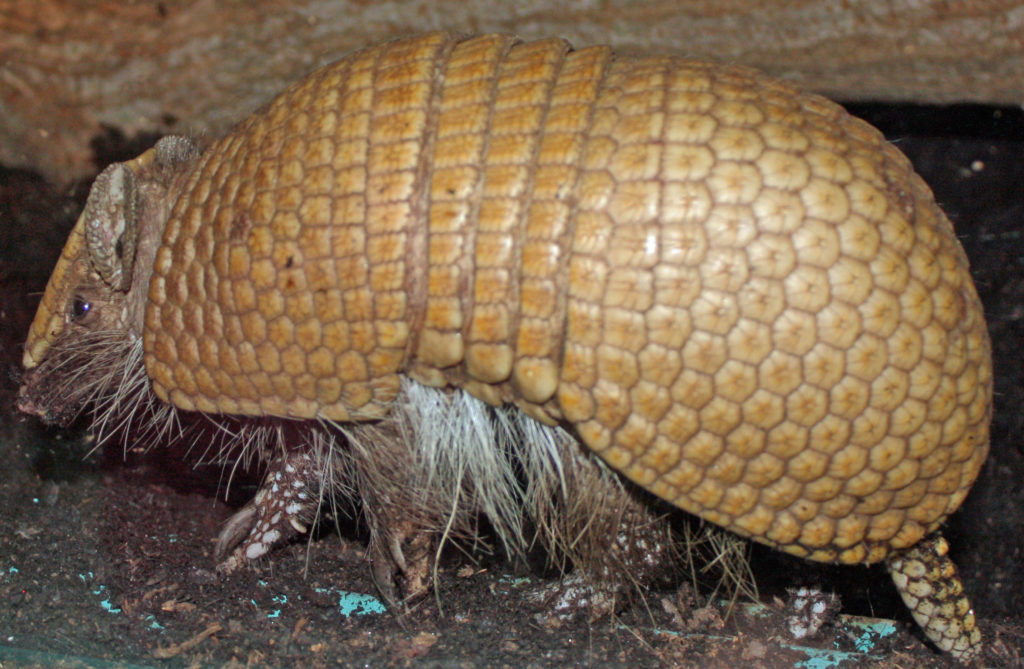
7. Much like anteaters, armadillos have very long and sticky tongues that work perfectly for eating ants and termites. They also have an appetite for fire ants.
8. Their love for insects is another reason why they dig vast underground networks. However, besides insects, they also like to eat small mammals, baby birds, eggs, carrion, roots and fruit.
9. They’re very adept at swimming. On average, they can hold their breath for 6 minutes when they dive deep, which is much longer than an average person.
10. Armadillos have very poor eyesight, which is why they developed a keen sense of smell to find their food.
11. They are very good climbers as they have been shown to climb a fence that they can’t dig under.
12. Armadillos have their mating season in July but females only become pregnant in November. They go through what’s known as delayed implantation, in which the female armadillo postpones her pregnancy until her surroundings become satisfying.
13. Baby armadillos are born without the bony protection plates. It takes a few weeks for their soft skin to turn in the hard plates.
14. From one single egg, 4 armadillos are born. They’re all identical and are called quadruplets.
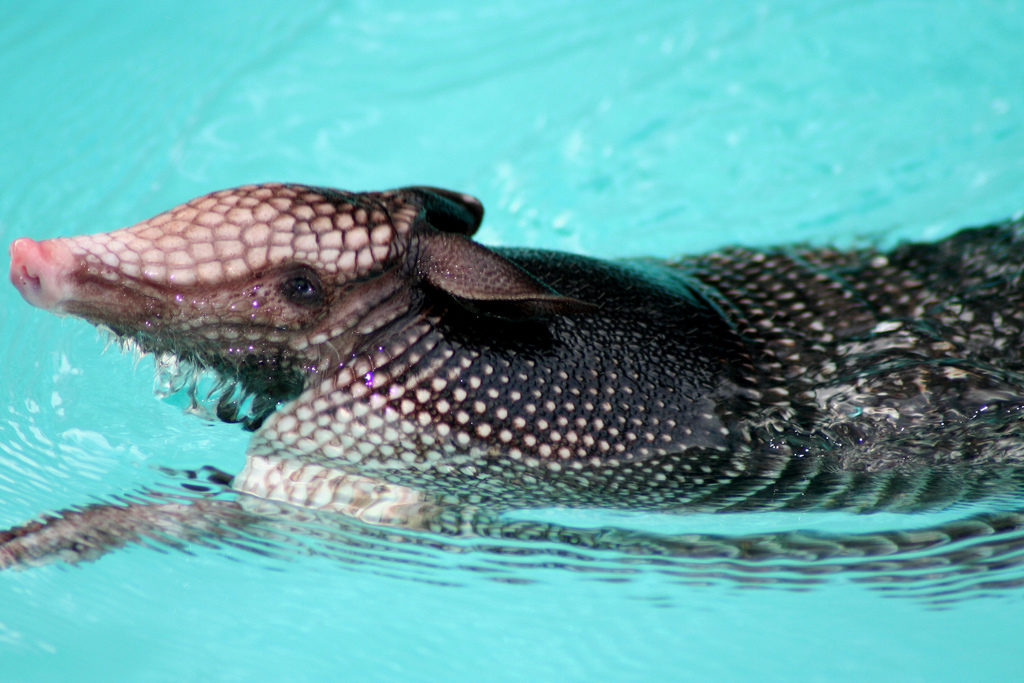
15. Armadillos tend to live 4 to 7 years in the wild and 12 to 15 years in captivity, largely due to the better living conditions in captivity.
16. There are 21 identified armadillo species, the most common of which is the nine banded armadillo, the Dasypus novemcinctus. Some of the other species are the screaming hairy armadillo, the greater long nosed armadillo, the southern naked tailed armadillo, the pink fairy armadillo, and the giant armadillo, which can grow to be up to 120 pounds.
17. The plates that surround the armadillo are made out of bone. They actually grow directly out of the creatures vertebrae and the number and the pattern of the bands depends entirely on the particular species of armadillo.
18. Armadillos are very closely related to sloths and anteaters. They’re classified as xenarthrans, which is a superorder of placental mammals that includes sloths and anteaters. This order is identified by the fact that they all have strange joints, or an extra articulation in the creatures backbone.
19. Armadillos are used to study leprosy. Due to their slow metabolism, they’re very susceptible to leprosy, which is why they’re so often used as test subject to study the bacterium.
20. During the Pleistocene epoch, which is about a million years ago, South America was home to the Glyptodon. A glyptodon is a 10 foot long, one ton armadillo that ate plants instead of insects.
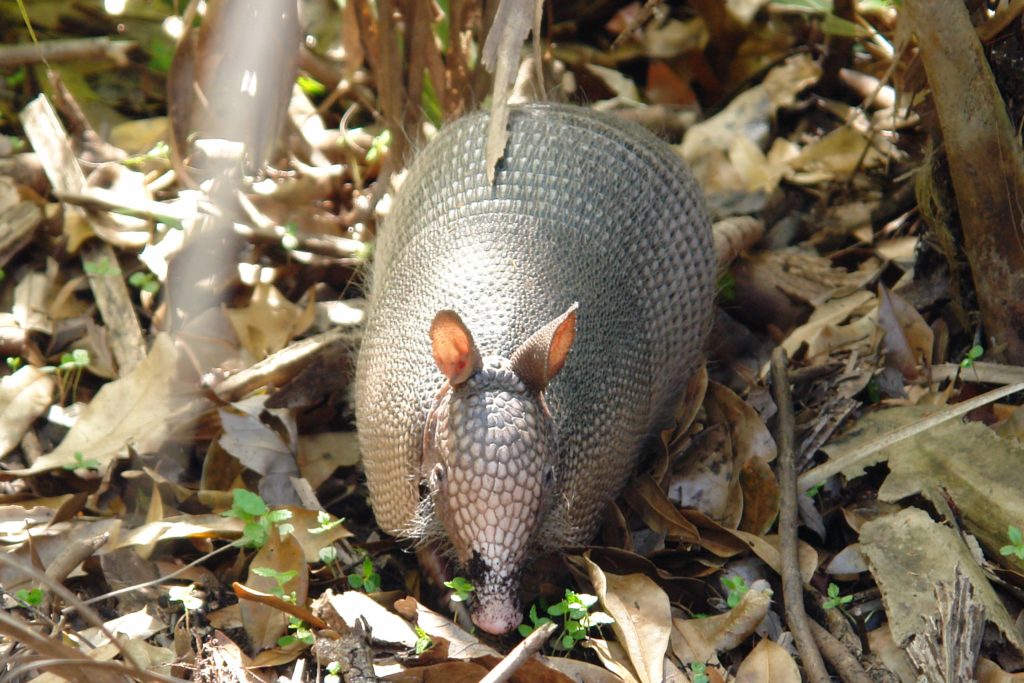
21. Charangos, which is a variant of the guitar that’s popular among the indigenous people of South America, were made from armadillo shells.
22. The name “armadillo” came from the Spanish word meaning “little armored one.”
23. During the Great Depression in the United States, people use to eat armadillos. They were called a “possum on the half-shell,” and they’re said to taste like pork.
24. The screaming armadillo, which can be found in Paraguay, Argentina and Bolivia, has long hairs growing from between its bone shell and screams very loudly when it feels threatened.
25. Because the three banded armadillo curls up like a ball, it was the mascot for the 2014 World Cup in Brazil.
26. The nine banded armadillo is the only armadillo species that you will find in the United States. It mainly lives in the American South, in locations such as Texas and Nebraska.

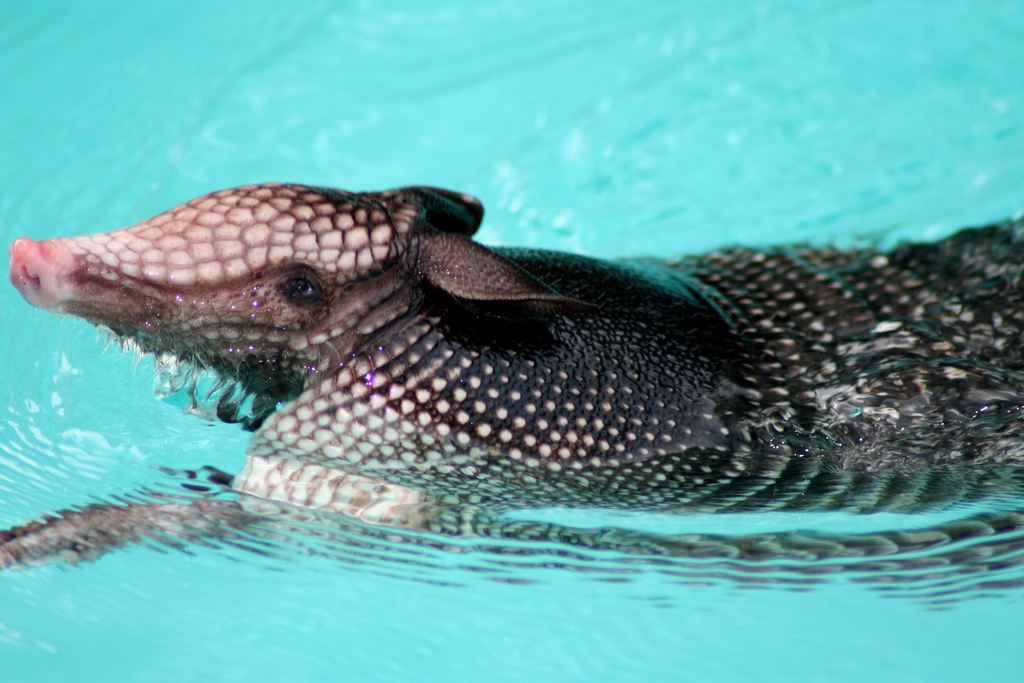

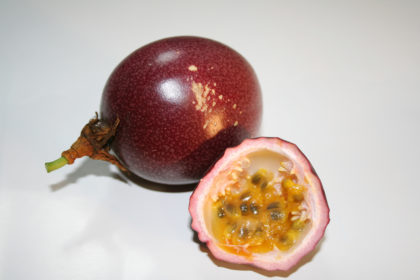

One Comment
Pingback:
March 29, 2018 at 2:15 pm